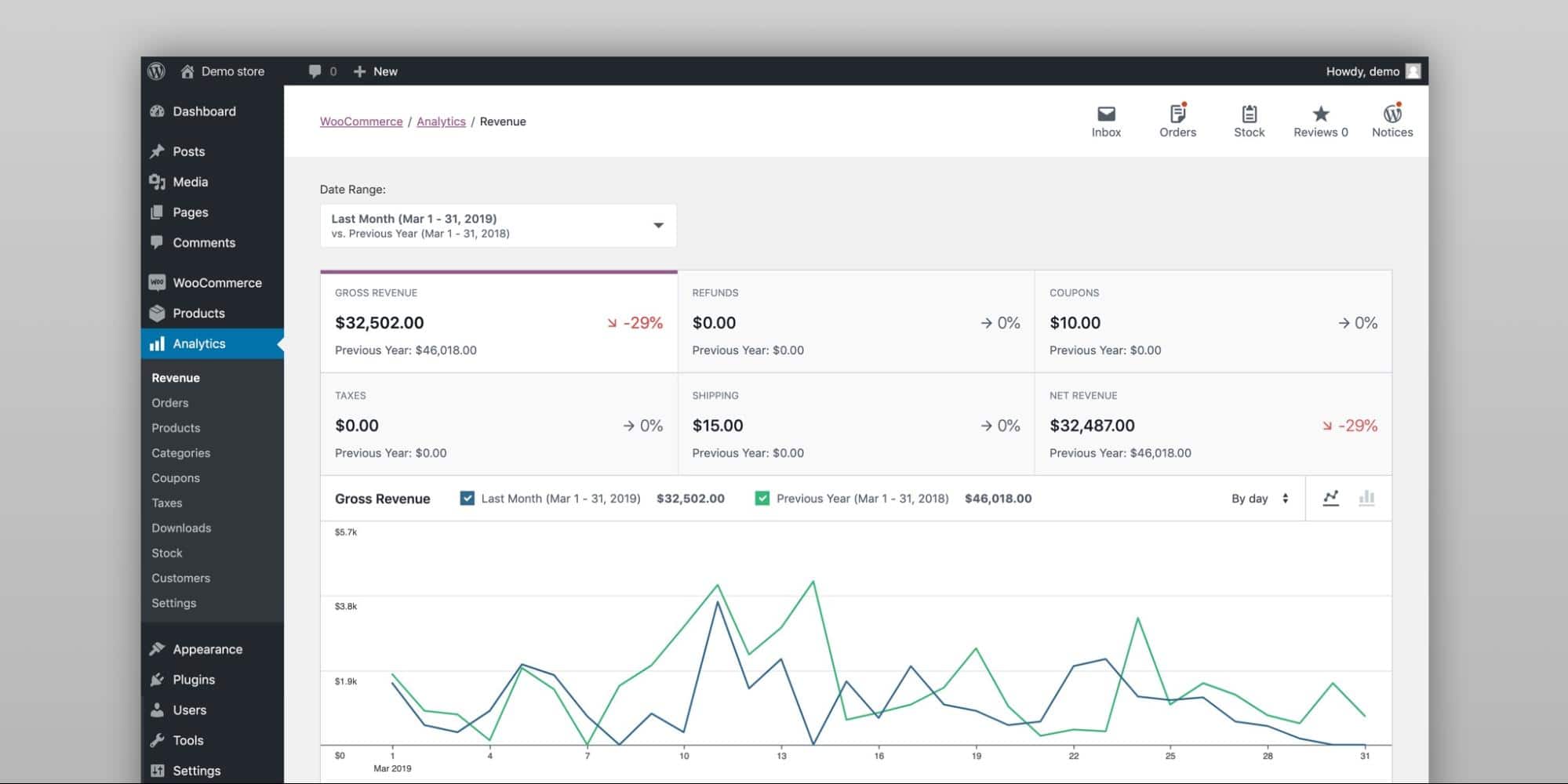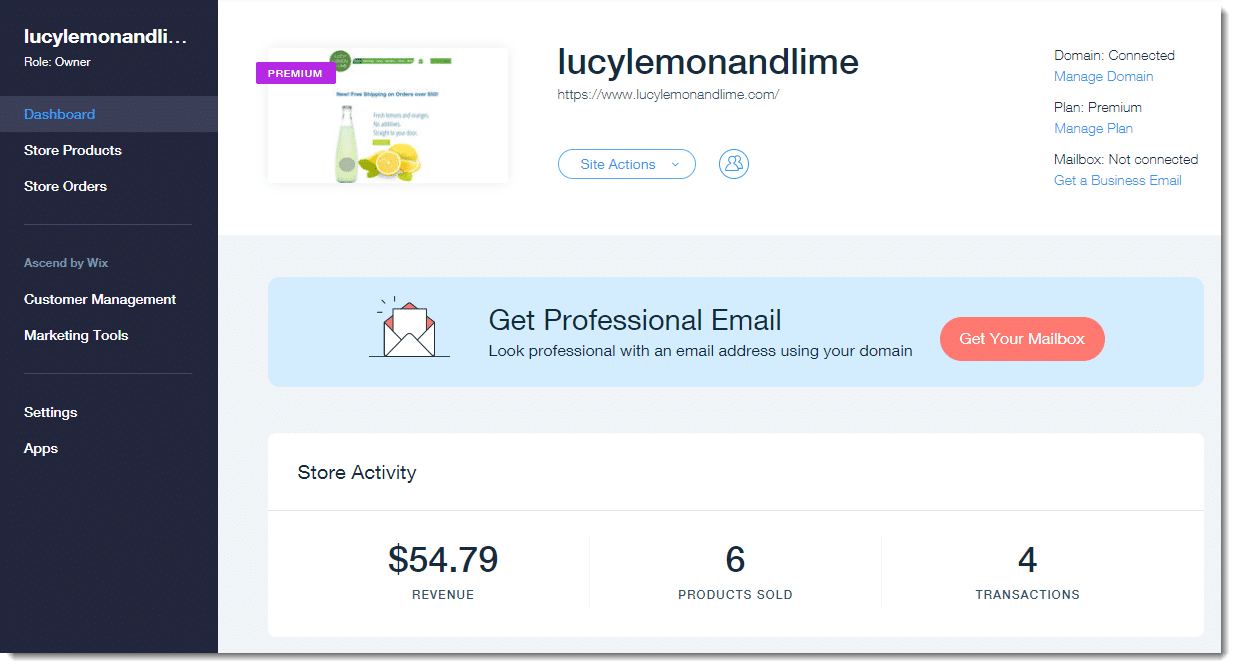The US is expected to reach $735 billion in eCommerce sales by 2023. The rest of the world isn’t far behind.
In other words, if your business is not online yet, you’re missing out on your slice of the pie.
So, if you’re sitting on the fence about starting a new online venture, don’t be. Now is a great time to get online.
There is a range of top tier eCommerce website platforms that can be used to grow your online presence or give you eCommerce functionality for the first time. However, it can be tricky to find the perfect one to suit your business’s needs. That’s why we’ve created a comprehensive guide to help you choose.
Here are the top eCommerce platforms to use in 2020 (and beyond).
What is an eCommerce Platform?
An eCommerce platform is a software application that allows an eCommerce business to sell their physical products or – occasionally – services online through their very own website. You don’t need to have an established business to enter the online world. In fact, your business may operate online entirely.
Whether you’re a brick-and-mortar store wishing to expand your reach, or a brand new business starting with online sales channels from scratch, your choice in eCommerce software can have a huge impact on your business.
Ecommerce Features Comparison
Top Ecommerce Platforms
1. WooCommerce.
WordPress users might like the idea of installing an eCommerce plugin, rather than setting up a new site. That’s where WooCommerce comes in.
It’s a free platform for WordPress users to transform their site into a fully functional eCommerce website. You just have to install it, add several products, and configure your settings.
It’s easy to use and navigate, more reasons why it’s one of the most popular eCommerce platforms to use in 2020. You can also track your eCommerce store stats through the analytics tab, shown here:

Capterra Rating
Recent review – “I like how flexible WooCommerce is. You can do pretty much anything any e-commerce solution can do, often for free.” Steven D, Website Developer.
Strongest Feature
Arguably the strongest feature of WooCommerce is that it’s customisable. Because it’s open-source, there are a plethora of helpful modifications available. The best part? Many of these plugins are free!
Pricing
Though many aspects of WooCommerce are free, it does offer paid premium extensions and themes. These can range from $40 to $1020.
Support
One of the downsides of WooCommerce is that it doesn’t go as far in terms of support as some of the other eCommerce platforms. There’s no phone or email support. Instead, there are 24-hour live chat assistants and several community forums.
Usability
If you’re familiar with WordPress, WooCommerce is an excellent choice. But, even if you’re not, it won’t take long to get the hang of it. The user interface is clear and easy to use.
The only factor that makes it different from the likes of Shopify and Bigcommerce is that you’ll need to find a host to install WordPress. From there, you can proceed with WooCommerce.
What’s more, WooCommerce is compatible with a range of payment options, such as credit card, Stripe, Sagepay, and Paypal. You can also install supportive plugins such as Yoast for SEO pointers and Mailchimp for email marketing.
Pros
- Easily integrated with WordPress.
- Ecwid integration.
- WordPress is an excellent platform for search engine optimisation (SEO).
- Many plugins are available.
- Lots of forums filled with WordPress experts available online.
- Cheap to set up.
- Google analytics integration.
- 1-Click selling app available.
- Coupons and discount codes.
- Mobile app.
Cons
- Relies on WordPress.
- Good hosting can be expensive.
- Not much support.
- Add-ons can be costly.
- Extensions needed for simple functions.
- Need prior knowledge of WordPress.
2. Shopify.
Founded in 2006, Shopify has grown to become one of the best eCommerce platforms. Its creators saw what they thought to be a gap in the market – for an easy-to-use eCommerce platform that anyone can navigate.
The company insists that you shouldn’t need design or technical experience to create a website. Their aim was “making it easy for anyone to create a beautiful and powerful online store.”
They now own a large majority of the market share.

Capterra Rating
Recent review – “Overall experience is good. It’s beneficial for startups as within a few weeks you have a store ready, and you can go to market faster than other solutions.” Vipin P, CTO.
Strongest Feature
Shopify’s Point of Sale (POS) system may be one of their strongest features. It allows you to sell your products online or in your actual brick-and-mortar storefront, without the need for any additional software or machinery such as external cash registers. This brings together in-store and online sales in a very versatile way that omnichannel retailers are sure to appreciate.
Pricing
Spotify offers a free 14-day trial. After that, the pricing structure is as follows:
- Basic – $29 a month.
- Shopify – $79 a month.
- Advanced Shopify – $299 a month.
Support
Shopify offers 24-hour live chat and a cloud phone system for support. They also have an online help centre with many FAQs, as well as a support forum.
Usability
Because it was designed to be the easiest eCommerce platform to use, Spotify prides itself on its usability. You can set up a Shopify account within minutes. Choose from a wide range of templates, or personalise the site to your preferences (though this does require coding knowledge).
You can manage your site’s functionality through Shopify’s CMS system. There are a variety of add-ons and extensions available.
Pros
- Unlimited hosting for stores.
- Super-fast loading time.
- Real-time sales statistics.
- Easy to set up.
- 1-Click selling available.
- Good customer support.
- A range of themes available.
- A good option for physical store owners.
Cons
- Not highly rated for SEO.
- Coding knowledge needed to customise themes.
- Checkout process can’t be personalised.
- App add-ons can be expensive.
- No email hosting.
3. Wix.
Wix is touted as the go-to platform if you want to build a simple yet effective website, particularly appealing to small and medium businesses. It works around a drag-and-drop system, allowing you to create a fully functional online shop, one block at a time.
This is one of the easiest eCommerce platforms to use in 2020 because no coding or hosting is required. It’s known for its beginner-friendly interface and simple design processes.
It’s a free platform, with some add-ons and extensions available at a premium.
Capterra Rating
Recent review – “I had an awesome experience in building my portfolio and website with Wix. I would highly recommend this website builder to a beginner friend of mine!” Sandesh B, Blogger.
Strongest Feature
The drag-and-drop system is the main reason users find Wix so easy to use and is arguably its strongest feature. There are many themes to choose from, which can then be customised through its drag-and-drop editor with ease and very little technical know-how required.
Pricing
Wix offers a range of packages:
- Connect Domain – $3 a month.
- Combo for Personal Use – $6 a month.
- Unlimited – $8.50 a month.
- VIP – $18 a month.
Support
Wix’s customer support is excellent thanks to their CRM software. They can be contacted via phone, email, and even social media. They also have online community forums and their own help centre.
Usability
If you’ve never tried to set up a website before, then Wix could be the best first step for your online business. The templates are great for digital product display, ideal for eCommerce. It also has a Wix AI feature, which uses artificial intelligence to build the site for you.
However, if you are more competent in web design, then it may be too basic – you might wish to customise it more.
Pros
- User-friendly drag-and-drop system.
- Free themes available.
- Simple to use and easy setup.
- Good customer support.
- Inventory management.
- Integration with ShipStation app for improved shipping experience.
- Payment processing service.
- Great for beginners.
- The mobile app is available from your app store.
Cons
- Poorly rated for SEO.
- Difficult to fully customise.
- Templates aren’t interchangeable.
- Website is not transferable.
- Tracking and analytics on paid plans only.
4. BigCommerce.
BigCommerce was founded in 2009, and since then has risen to be the best eCommerce platform UK businesses use. They’re invested in customer support, priding themselves on offering the total package when it comes to website creation.
BigCommerce is also great for larger businesses, hence the “Big” Commerce. It’s also a good choice for those with an established brick-and-mortar store who want to take their sales online.
It does have a different pricing structure to other platforms for its ‘Enterprise’ plan, which may mean you get extra services depending on how big your company is.

Capterra Rating
Recent review – “I loved the versatility available for building product pages, being able to set it up, so pricing adjusts automatically for different product options.” Margaret M, UX Analyst.
Strongest Feature
Customer service is one of BigCommerce’s selling points. They offer support via email, live chats, and over the phone. As well as this, they produce guides and videos on how to use their platform. Their team of experts are also on-hand to offer advice about online selling.
Pricing
Currently, BigCommerce offers a 15-day free trial. After this, pricing is as follows:
- Standard – $29.95 per month.
- Plus – $79.95 per month.
- Pro – $299.95 per month.
- Enterprise – Available on request.
Users can take advantage of a 10% discount for the Plus and Pro options if paid annually.
Support
When it comes to remote customer service, BigCommerce leaves no stone unturned. They have 24-hour live chat services, phone support, and email support. Users can also ask questions in their community forums and access information from their help centres. Their support services are even available to those on trial.
Usability
Though BigCommerce is often used by medium to larger-sized businesses, it’s still good for beginners. BigCommerce has made its templates easy to modify and has a big focus on SEO – great news if you’re just starting online.
The platform also uses their own CMS that allows users to run a website and not just a store.
It also offers multi-currency payment options, a feature that makes it stand out among the crowd. Payments can be accepted through over 40 pre-integrated payment gateway. Then shipping details can be customised as per the business’s requirements.
Pros
- Great SEO performance.
- Good customer support.
- Access to web design experts.
- Flexible product management.
- Great theme designs.
- Multi-channel selling.
- All-in-one solution.
- Unlimited products.
- Lots of extensions available.
Cons
- Can be expensive further up the pricing structure.
- No 1-Click selling available.
- Themes can be expensive.
- Shopping cart abandonment isn’t on the standard plan.
5. Magento.
Magento has undergone various transformations to be the eCommerce solutions powerhouse it is today. Most recently, in 2018 it was acquired by Adobe and is available in two versions: Magento Open Source and Magento Commerce.
Their open-source platform is much like WooCommerce in that it’s completely free to install, but you need to pay extra for web hosting.
It’s popular with medium to large businesses because it’s easy to use with amazing customization possibilities, but further knowledge of website development could take it to the next level.

Capterra Rating
Recent review – “The biggest, most robust but most importantly Open Source e-commerce software out there. The only limitation is your imagination…” Amiel S, IT Manager.
Strongest Feature
Magento is a very flexible platform. It could be said that one of its strongest features is that there are no limitations on how you can design your online store. If you can code, then your design options are practically endless!
Pricing
Though Magento is free, there are add-on options available. These range from $1,600 upwards.
Support
Magento has a 24-hour customer support team who can be contacted via live chat. They also have a large user community. If you have a question, you’ll likely find the answer on its extensive community forum.
Usability
Because Magento puts the power in the user’s hands when it comes to website creation, it can be difficult to build a site on your own if you don’t have the experience.
The platform has over 5,000 extensions, but the website can take longer to develop and, in some cases, require expertise. If your business doesn’t have a web development department, then you would need to outsource this to build the website you want on Magento.
Pros
- Very easy to customise.
- Not beginner-friendly.
- Some hosts don’t support Magento.
- Limited ready-made themes.
- A large community of users.
- Fully scalable for global expansion.
- SEO friendly.
Cons
- Poor customer support.
- Requires extensive coding knowledge, so falls in terms of ease of use.
- Premium extensions can be expensive.
- Time-consuming when building the site.
6. Squarespace.
Squarespace allows you to host and build your eCommerce site all in one place. Grown in New York, Squarespace now provides a complete service for website creation.
Similar to Wix in its functionality and style, users can build websites with the drag-and-drop system.
It’s popular with SMEs and entrepreneurs who are just starting out and only require a basic website. The eCommerce platform is fully functional but only works together with the main website builder.

Capterra Rating
Recent review – “I love Squarespace. I’ve been using it for over 3 years and have been able to produce several websites with it quickly.” Alyssia P, Creative Director.
Strongest Feature
Squarespace offers an incredibly easy-to-use interface which is ideal for beginners. Even the most inexperienced of website creators will be able to design a sleek website using Squarespace.
Pricing
The pricing structure for Squarespace is as follows:
- Personal – $13 per month.
- Business – $19 per month.
- Commerce – $26 per month.
- Advanced Commerce – $40 per month.
Support
Squarespace offers the same support to all pricing tiers, which is a great plus point. This includes social media support, 24-hour email support, live chat, online help centre, and community forum.
Usability
There’s a reason Squarespace is a popular choice for small businesses and entrepreneurs – it’s straightforward to use! You can modify your eCommerce platform no matter your experience level. There aren’t a wide range of add-ons available, and you can’t add third-party extensions. But this may limit the possibility for confusion if you’re new to website design.
Pros
- Easy to use the drag-and-drop system.
- Low price tiers.
- Great for simple websites.
- Good SEO tools.
- Integrates with ShipStation for shipping options.
- Good customer service.
- Great templates and designs.
Cons
- Charge a 3% transaction fee.
- No drop shipping.
- Low page-speed ratings by Google.
- No Amazon or eBay integration.
- No third-party extensions or add-ons.
Conclusion
Choosing the right eCommerce platform for your business is no easy feat.
In general, you should ensure that your eCommerce platform was designed with you in mind. For example, if you’re a larger business selling tech gadgets and need more advanced marketing tools, you may prefer BigCommerce. Whereas, if you’re a small start-up selling gift cards and wrapping paper, you may find Squarespace is more suited to your needs.
On the whole, there’s no one choice for each business type. Choose the option that most aligns with your business plan. It’s a good idea to look for options that allow for scalability, where you can grow your website at the same rate as your business.

Originally published Dec 09, 2020, updated Jan 16, 2023



